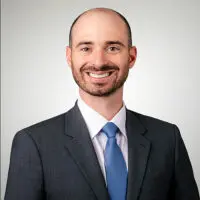SWIPLit
Andy Warhol, Prince, and the First Amendment: U.S. Supreme Court Grants Review of Questions Concerning “Fair Use” Under Copyright Act
The U.S. Supreme Court recently granted a petition for writ of certiorari (docket, here) to review the extent to which a work of art is a “transformative” fair use under the Copyright Act. The Court will review a Second Circuit decision holding Andy Warhol’s set of silkscreened portraits of Prince (“Prince Series”), stemming from an original photograph, were not transformative.
Lynn Goldsmith, who has photographed Michael Jackson, Bruce Springsteen, Bob Dylan, Madonna, James Brown, the Beatles, and the Rolling Stones, photographed Prince originally in 1981. In 1984, Prince released Purple Rain and his popularity exploded. Vanity Fair licensed one of Goldsmith’s Prince photographs to use in a Vanity Fair article. Vanity Fair also commissioned Warhol to create an image of Prince based on the Goldsmith photograph, and he ultimately created 15 additional works in the Prince Series. When Prince died in 2016, Vanity Fair’s parent company sought permission from the Andy Warhol Foundation for the Visual Arts, Inc. (which had assumed ownership of the Prince Series upon Warhol’s death) to produce one of the Prince Series works in a Vanity Fair tribute issue. When Goldsmith became aware of the Vanity Fair cover image, she informed the Foundation’s director of licensing that she believed the cover infringed her copyright.
The Foundation initially sued Goldsmith in the Southern District of New York in 2017 for a declaratory judgment that the Prince Series did not infringe Goldsmith’s copyright or that it was fair use. Goldsmith counterclaimed for copyright infringement. The district court granted summary judgment in the Foundation’s favor, holding that Warhol’s work constituted fair use.
Whether a work constitutes “fair use” of a prior work depends on four factors: (1) purpose and character of use; (2) nature of the copyrighted work; (3) amount and substantiality of the preexisting work used; and (4) market effects.
The Second Circuit reversed, and found that all four factors favored Goldsmith. The Foundation petitioned for a rehearing en banc, which the Second Circuit granted. Although it issued an amended opinion, it did not amend its ultimate decision.
The U.S. Supreme Court granted the petition for writ of certiorari, with the Foundation’s question for review presented as to “[w]hether a work of art is ‘transformative’ when it conveys a different meaning or message from its source material . . . or whether a court is forbidden from considering the meaning of the accused work where it ‘recognizably deriv[es] from’ its source material . . . .”
The petition and the related filings emphasized the First Amendment and its relationship to creative expression, which were absent in the district court’s and Second Circuit’s opinions. The Foundation emphasized that the Second Circuit’s decision would “chill artistic expression and undermine First Amendment values,” and that the “fair use defense provides a critical First Amendment safeguard,” while Goldsmith argued that the “original copyright-holders have their own First Amendment interests and serve significant artistic aims of their own.”
Amici curiae emphasized the First Amendment in their respective briefs, all in support of the Foundation. Amici Copyright Law Professors encouraged the Court to “reinforce the role of fair use in promoting First Amendment values such as encouraging new messages and new meanings.” Amici Barbara Kruger and Robert Storr (self-described working artists and professors of art—Storr is a former senior curator of paintings and sculptures at the Museum of Modern Art in New York) observed that copyright laws “have the potential to limit free expression,” and argued that “[r]equiring that an artist make some undefined but significant visual changes to an original work for the new work to be ‘transformative’ is an arbitrary, judicially-imposed limitation on artistic freedom.” Amici The Robert Rauschenberg Foundation, Roy Lichtenstein Foundation, and Brooklyn Museum shared the concern that the Second Circuit’s decision would have an “enormous chilling effect on the arts.”
Amici Art Law Professors focused heavily on the First Amendment and the fair use doctrine. They principally argued that the doctrine is a safeguard for all works using pre-existing expression and that the Second Circuit ignored the meaning and message of Warhol’s Prince Series.
A date is not yet set for oral argument before the United States Supreme Court, but the Court has granted review to hear it this term.























